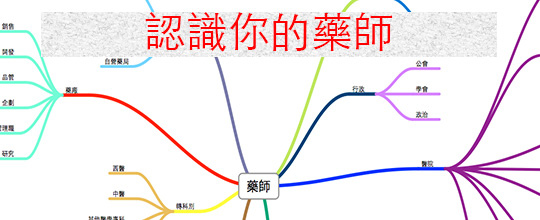
Medullary Thyroid Cancer
Indicated for treatment of progressive, metastatic medullary thyroid cancer
140 mg PO qDay on empty stomach (see Administration)
Pharmacology
Mechanism of Action
Tyrosine kinase inhibitor that targets RET, MET, VEGFR-1, -2, and -3, KIT, TrkB, FLT-3, AXL, and TIE-2 pathways; these tyrosine kinases are involved in both normal cellular function and pathologic processes (eg, oncogenesis, metastasis, tumor angiogenesis, and maintenance of tumor microenvironment)
Absorption
Peak Plasma Time: 2-5 hr
High fat meal increases Cmax and AUC by 41% and 57% respectively compared to fasted conditions
Distribution
Protein Bound: ≥99.7%
Vd: 349 L
Metabolism
Metabolized via hepatic CYP3A4
Metabolites: XL184 N-oxide
CYP3A4 substrate; CYP2C8 inhibitor (noncompetitive), CYP2C9 and CYP2C19 inhibitor (mixed), CYP3A4 (weak competitive); CYP1A1 inducer
P-gp transport inhibitor
Elimination
Half-life: 55 hr
Total body clearance: 4.4 L/hr
Excretion: 54% feces, 27% urine
Dosage Modifications
CYP3A4 inhibitors
Avoid coadministration with strong CYP3A4 inhibitors (eg, ketoconazole, itraconazole, clarithromycin, atazanavir, nefazodone, saquinavir, telithromycin, ritonavir, indinavir, nelfinavir, voriconazole)
If strong CYP3A4 inhibitor required, decrease cabozantinib dose by 40 mg/day; resume previous dose 2-3 days after strong CYP3A4 inhibitor discontinued
CYP3A4 inducers
Avoid coadministration of strong CYP3A4 inducers (eg, phenytoin, carbamazepine, rifampin, rifabutin, rifapentine, phenobarbital, St. John’s wort)
If strong CYP3A4 inducer required, increase dose by 40 mg/day; resume previous dose 2-3 days after strong CYP3A4 inducer discontinued
Hepatic impairment
Moderate-to-severe: Not recommended
Withhold dose
Withhold dose for Grade 4 hematologic adverse reactions, ≥Grade 3 nonhematologic adverse reactions, or intolerable Grade 2 adverse reactions
Upon resolution, reduce dose as follows:
-if previous daily dose 140 mg, resume at 100 mg/day
-if previous daily dose 100 mg, resume at 60 mg/day
-if previous daily dose 60 mg, resume at 60 mg if tolerated, otherwise, discontinue
Permanently discontinue
Development of visceral perforation or fistula formation
Severe hemorrhage
Serious arterial thromboembolic event (eg, myocardial infarction, cerebral infarction)
Nephrotic syndrome
Malignant hypertension, hypertensive crisis, persistent uncontrolled hypertension despite optimal medical management
Osteonecrosis of the jaw
Reversible posterior leukoencephalopathy syndrome
Administration
Take on empty stomach, do not eat for at least 2 hr before or 1 hr after administration
Swallow capsule whole; do not chew or empty contents of capsule
Do not take a missed dose within 12 hr of the next dose
Do not ingest foods (eg, grapefruit, grapefruit juice) or nutritional supplements known to affect CYP3A4 substrates (eg, St. John’s wort)
Adverse Effects
>10%
AST, ALT increased (86%)
Diarrhea (63%)
Hypertension, treatment-emergent (61%)
Increased TSH (57%)
Lymphopenia (53%)
ALP increased (52%)
Hypocalcemia (52%)
Stomatitis (51%)
Palmar-plantar erythrodysesthesia syndrome (50%; ≥Grade 3, 13%)
Weight decreased (48%)
Appetite decreased (46%)
Nausea (43%)
Fatigue (41%)
Oral pain (36%)
Neutropenia (35%)
Thrombocytopenia (35%)
Dysgeusia (34%)
Hair color changes, depigmentation, graying (34%)
Hypertension (33%)
Hypophosphatemia (28%)
Constipation (27%)
Abdominal pain (27%)
Hypobilirubinemia (25%)
Vomiting (24%)
Asthenia (21%)
Dysphonia (20%)
Rash (19%)
Dry skin (19%)
Hypomagnesemia (19%)
Hypokalemia (18%)
Headache (18%)
Alopecia (16%)
Dizziness (14%)
Arthralgia (14%)
Dysphagia (13%)
Muscle spasms (12%)
Dyspepsia (11%)
Erythema (11%)
1-10%
Hyponatremia (10%)
Hemorrhoids (9%)
Musculoskeletal chest pain (9%)
Anxiety (9%)
Paresthesia (7%)
Peripheral sensory neuropathy (7%)
Dehydration (7%)
Hyperkeratosis (7%)
Hypotension (7%)
Venous thromboembolism (6%)
eripheral neuropathy (5%)
Non-GI fistula (4%)
GI perforation (3%)
Arterial thromboembolism (2%)
Proteinuria (2%)
GI fistula (1%)
Osteonecrosis of the jaw (1%)
<1%
Reversible posterior leukoencephalopathy syndrome (RPLS)
Pregnancy & Lactation
Pregnancy Category: D; based on its mechanism of action, can cause fetal harm when administered to pregnant women
Lactation: Unknown whether distributed in breast milk; a decision should be made whether to discontinue nursing or to discontinue the drug, taking into account the importance of the drug to the mother
Black Box Warnings
Perforations and fistulas
GI perforations occurred in 3% and fistula formation in 1%
Non-GI fistulas (eg, tracheal, esophageal) reported in 4%
Discontinue if perforation or fistula formation occurs
Hemorrhage
Severe, sometimes fatal, hemorrhage including hemoptysis and GI hemorrhage occurred in 3%
Monitor for signs and symptoms of bleeding
Do not administer with severe hemorrhage
Cautions
GI perforations and fistulas reported (see Black Box Warnings)
Serious and sometimes fatal hemorrhage reported (see Black Box Warnings)
Thromboembolic events reported
May impair wound healing; stop treatment at least 28 days prior to schedules surgery; withhold with dehiscence or wound healing complications requiring medical intervention
Increases risk of treatment-emergent hypertension; discontinue for severe hypertension that cannot be controlled with antihypertensive therapy
Osteonecrosis of the jaw reported (rare); discontinue at least 28 days prior to invasive dental procedures
Palmar-plantar erythrodysesthesia syndrome reported; withhold treatment if needed (see Dosage Modifications)
Proteinuria may occur
Reversible posterior leukoencephalopathy syndrome (RPLS) reported (rare)
Avoid coadministration with strong CYP3A4 inhibitors or inducers
Not recommended with moderate-to-severe hepatic impairment





 留言列表
留言列表
 線上藥物查詢
線上藥物查詢 